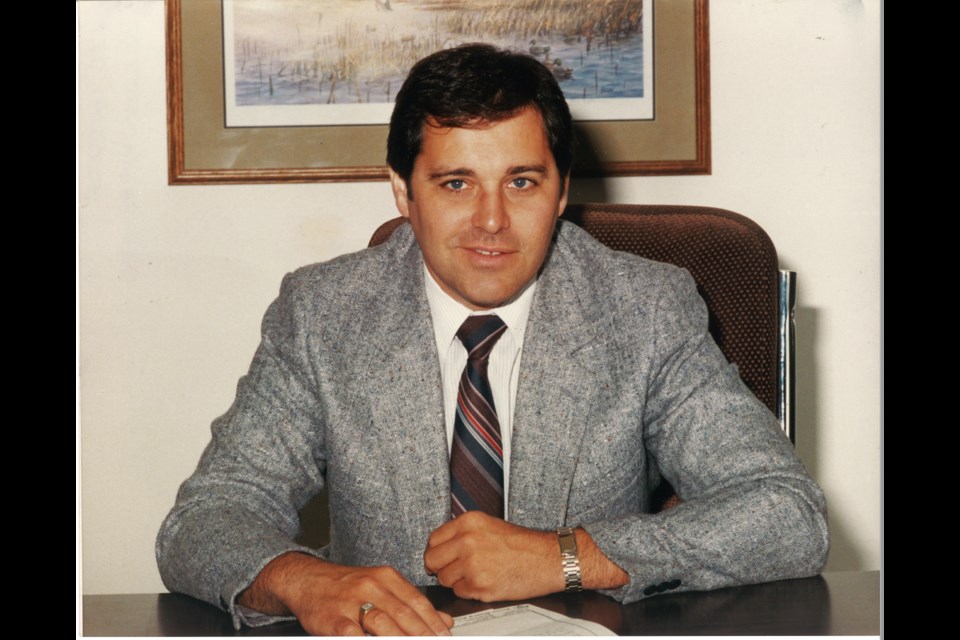BONNYVILLE – If there are three things Leo Vasseur knows about, it is business, politics and the community of Bonnyville.
Born to Bonnyville homesteaders and raised on a farm just outside of town, Vasseur would go on to become a councillor and a mayor for the Town of Bonnyville, as well as a long-time business owner.
Vasseur was first elected to the Town of Bonnyville council in 1977 at the age of 30. By 1983, he would run for mayor and serve for two terms.
Included on his political resumé was a term in provincial office as one of the few Liberal candidates to ever win a seat in a rural Alberta riding. In the 1993 Alberta general election, Vasseur defeated Progressive Conservative candidate Ernie Isley.
“Not much has stayed the same, really. As much as you think that Bonnyville is agriculture-based, it isn't. The oil patch has more impact on this community than any other economic activity,” said Vasseur, reflecting on the economic drivers of the town.
“If you're going to live in a community like that, you have to get ready for the roller coaster.”
As a local politician, Vasseur along with the council of the time had to consider the stability of the municipality while anticipating shocks to the economy outside their control. There were good times and there were times when many felt hesitant to take risks, recalled the 76-year-old.
Expansions and population growth could always be counted on to follow increased activity in the oil patch, he said.
Today, the Town of Bonnyville’s population is over 6,000, around double the population of when Vasseur was first elected to municipal office in the late 70s. Much of this growth can be attributed to periods of rapid expansion of industry and job creation in the region.
“Some of the people that have done the best out here are the local businesses that had tied themselves to servicing the old patch,” he said. But Vasseur acknowledged that not all businesses that opened shop were able to make it for the long haul.
“It's a tough community to survive. Business is tough. You see the remnants of it just by driving down Main Street and seeing some of those empty buildings.”
Vasseur said the cycle of boom and bust has been affecting the town for about 40 years. He recalls the particularly devastating economic downturn caused by dropping oil prices in the early 80s and 90s.
“This is the fourth [bust] that I’ve gone through,” he said. “There have been many success stories, but there's also been some hard times and some very disappointing ventures for people.”
Even today, higher vacancies of commercial and residential properties sparked by a drop in oil prices in 2014 remain.
“We have started to see it recover for the last couple of years, but it hasn't recovered enough to fill the empty houses that are in town,” he said.
More than boom and gloom
Despite the gloom of low markets, the community has always found a way to overcome hardships and thrive when opportunities were ripe for the picking.
“It's important to look back at where the successes have been and where the failures have been,” said Vasseur.
He points to accomplishments made possible through collaboration of the community that have improved the quality of life for Bonnyville residents and left remarkable legacies.
“I think one of the successes is the fire agreement, [the Bonnyville Regional Fire Authority]. That's been going in the right direction in a major way,” he said.
The town’s first swimming pool, which was constructed in 1980 for $2 million, was also a landmark facility for the town. Like many facilities in town, it was made possible with contributions from the community, different levels of government and industry.
Another huge milestone for the town was the completion of the Bonnyville Regional Waterline and the formation of the Bonnyville Regional Water Commision.
Vasseur recalls decades of ongoing dialogue among community members wanting water from Cold Lake to be tied into the town’s municipal lines, but funding the massive project was out of the scope of the town and partnering municipalities' budgets.
"For the Town to incur that kind of a debt load, you'd have to have four or five times the population,” said Vasseur.
In the end, the Bonnyville Regional Waterline would cost roughly $97-million and was funded through the Government of Canada’s Clean Water and Wastewater fund, the provincial government’s Water for Life grant.
“A big portion of it came from the province under [former Premier Rachel] Notley and the ‘bad’ Liberals out of Ottawa,” said Vasseur, with a hint of irony.
The construction of the Bonnyville and District Centennial Centre will also go down in history as a major landmark for the Bonnyville community.
“I bring my granddaughter to play soccer there and I wouldn't have been able to do that 20 years ago or 40 years ago. So, there's been some growth that has been positive, and that place should be celebrated as far as I'm concerned.”



